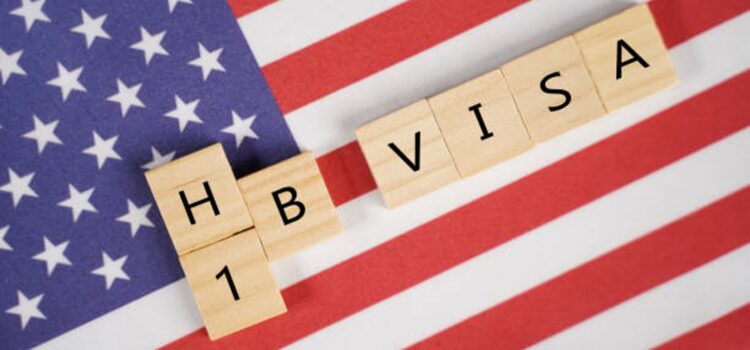4 Most Common U.S. Work Visas
 The United States boasts the world’s largest economy, which inspires foreign nationals from around the world to seek employment in the U.S. Likewise, U.S. employers may not be able to find qualified and available U.S. workers to fill their job needs, which allows them to recruit and hire foreign national workers. Another great perk to most non-immigrant work visas is that the spouse and minor children of the foreign national employee may also live and work in the U.S. They are considered derivative beneficiaries.
The United States boasts the world’s largest economy, which inspires foreign nationals from around the world to seek employment in the U.S. Likewise, U.S. employers may not be able to find qualified and available U.S. workers to fill their job needs, which allows them to recruit and hire foreign national workers. Another great perk to most non-immigrant work visas is that the spouse and minor children of the foreign national employee may also live and work in the U.S. They are considered derivative beneficiaries.
With this in mind, the U.S. immigration system offers several types of work visas (also referred to as non-immigrant visas) suited to different employment needs. The first step in obtaining a work visa in the United States is understanding the various types of work visas available so you can determine which one works best for you. Our team of immigration experts at the Milovic Law Firm are breaking down the most common types of U.S. work visas to provide you with a better understanding of how a foreign national may qualify to work in the U.S.
Below you will find breakdowns of the top four most common U.S. work visas.
H-1B Visa: Specialty Occupation
 Easily the most popular type of U.S. work visa available to foreign nationals, this temporary work visa is specifically designed for individuals who work in specialty occupations and have a bachelor’s or higher education degree (or equivalent experience). The specialty job requirement generally includes duties comprised of a body of highly specialized knowledge which would require at least a bachelor’s degree.
Easily the most popular type of U.S. work visa available to foreign nationals, this temporary work visa is specifically designed for individuals who work in specialty occupations and have a bachelor’s or higher education degree (or equivalent experience). The specialty job requirement generally includes duties comprised of a body of highly specialized knowledge which would require at least a bachelor’s degree.
There is such a great demand for H-1B work visas in the United States that the U.S. government sets an annual limit of 85,000 visas. 20,000 of those visas are allocated to applicants with higher education degrees. In recent years, the exceedingly high number of applicants and lack of sufficient visas has increased attention to other types of work visas.
Treaty Investor/Trade Visa (E-1, E-2, and E-3)
The treaty visa was established under a treaty of commerce between the U.S. and certain foreign countries. The treaty work visa category is mainly for prospective traders and investors who are nationals of the foreign country. For a list of participating countries, please refer to the Department of State. This type of U.S. work visa is divided into the following classifications:
- E-1: Used for applicants who want to develop (or are in the business of) substantial trade between the U.S. and the treaty country, aka a treaty trader.
- E-2: Used for individuals who wish to enter the U.S. to develop and direct a U.S. business or enterprise that they have substantially invested in, aka a treaty investor.
- E-3: Available to applicants who are nationals of Australia and work in specialty or professional occupations.
L-1 Visa: Intracompany Transferee
 This type of work visa is reserved for employers who wish to transfer managers and executives or employees with specialized knowledge from a foreign office to a U.S. affiliated company or branch. This visa is also available for foreign businesses who wish to send an employee to open a new business location in the U.S. To qualify for the L-1 visa, the employee must have been working for the foreign employer branch for a minimum of 1 year (in the 3 years) preceding the L-1 visa application.
This type of work visa is reserved for employers who wish to transfer managers and executives or employees with specialized knowledge from a foreign office to a U.S. affiliated company or branch. This visa is also available for foreign businesses who wish to send an employee to open a new business location in the U.S. To qualify for the L-1 visa, the employee must have been working for the foreign employer branch for a minimum of 1 year (in the 3 years) preceding the L-1 visa application.
The L-1 visa is classified into two types of U.S. work visas: L-1A visa and L-1B visa. The L-1A visas is designed for individuals who hold managerial or executive positions within the company and currently work for a minimum of 1 year (or have worked for 1 year in the previous 3 years) at a branch or affiliate outside the U.S. The L-1B visas is designed for employees who possess specialized knowledge in the organization’s product, service, equipment or otherwise have an advanced level of knowledge related to the organization.
O-1 Visa: Extraordinary Ability
The O-1 work visa is reserved for foreign nationals who are deemed to possess extraordinary ability in the arts, sciences, athletics, business, or education. These are individuals who are considered to be at the top of their field and are nationally or internationally recognized for their achievements.
The O-1 visa is divided into the following classifications:
- O-1A: Individuals with an extraordinary ability in the sciences, education, business, or athletics (not including the arts, motion pictures or television industry);
- O-1B: Individuals with an extraordinary ability in the arts or extraordinary achievement in motion picture or television industry;
- O-2: Individuals who will accompany an O-1 artist or athlete to assist in a specific event or performance; and
- O-3: Individuals who are the spouse or children of O-1 and O-2 visa holders
Top Immigration Lawyers in Phoenix, AZ
Need help obtaining a U.S. work visa? Look no further than the Milovic Law Firm. When you work with us, you become an extension of our legal family. Each of our clients receives the full extent of our dedication, compassion, and aggressive pursuit of the best possible outcome for your case.
Our immigration attorneys can assist you with locating the necessary documents and getting your immigration application in order to afford you the best possible chance at success. For a free consultation with one of our skilled Phoenix immigration attorneys, contact us today.


